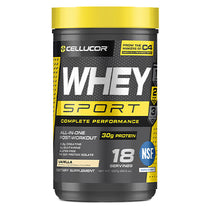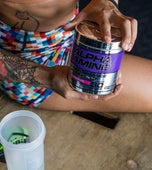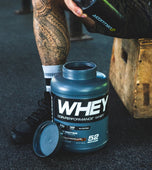by Erick Avila
Anyone that’s ever seen a sports drink commercial has probably heard about electrolytes. You probably know that it’s important to replenish electrolytes after a tough workout, but do you know what makes them so important? If not, don’t worry. We’re here to help.
Let’s go over what electrolytes are and how you can harness the power of XTEND Original for a new type of hydration and recovery drink.
What Electrolytes Do
Electrolytes are ions that conduct electricity in water. They’re involved in several processes in the body including maintaining fluid volumes, maintaining blood pH, and acting as cofactors for enzymatic reactions.[1] Cofactors are required for enzymes to activate, enzymes catalyze (accelerate) chemical reactions in our body.
The major electrolytes found in the body are bicarbonate, sodium, potassium, calcium, magnesium, phosphate, and chloride.[1]
- Bicarbonate plays a role in cellular pH regulation.[2]
- Calcium plays a role muscle contraction, nerve impulse transmission, and hormone secretion.[3]
- Chloride plays a role in maintaining fluid and electrolyte balance.[4]
- Magnesium plays a role in muscle contraction and relaxation, as well as in proper neurological functioning.[3]
- Phosphate plays a role in many important metabolic functions in the body.[3]
- Potassium plays a role in nerve impulse transmission and skeletal muscle contraction.[4]
- Sodium plays an important role in maintaining extracellular fluid volume.[3]
The Daily Recommended Intake (DRI) levels for the key electrolytes are:
- 1500 mg for sodium [5]
- 4700 mg for potassium [5]
- 1000 – 1300 mg for calcium [5]
- 420 mg of magnesium for men [5]
- 300 mg of magnesium for women [5]

The Benefits of Electrolytes & Exercise
During exercise, water and electrolytes are lost as a result of sweating. When exercise is high intensity and/or in a hot environment, sweat losses can be enough to impair performance.[6] Higher intensity exercise and longer duration exercise are both associated with greater losses of electrolytes through sweat. [7,8]
Sweat that is produced during exercise or heat exposure contains relatively high amounts of sodium and chloride.[9] Complete restoration of fluid balance after exercise is an important part of recovery. Hydration recovery after exercise includes replacing lost fluids and some electrolytes.[10]
How to Replenish Electrolytes Fast
Electrolytes can be obtained from different food sources. Some common dietary sources of calcium include milk, yogurt, cheese, citrus fruit, leafy green vegetables and nuts.[11] Dietary sources of magnesium include nuts, seeds, legumes, and green leafy vegetables.[12] Potassium can be found in dietary sources like dairy products, tropical fruits, and potatoes.[13] Common dietary sources of sodium include table salt, soy sauce, and seafood.[14]
Eating a well-balanced diet is an effective way to consume an adequate number of electrolytes daily. A popular strategy among athletes is to also include electrolyte-based drink mixes around the time of their workouts to avoid compromised performance.[15]
Hydration Replenishment With XTEND
XTEND Original is the BCAA drink that started it all. With it's huge selection of mouth-watering flavors, XTEND Original was designed to help you hydrate, repair, and recover.*
Add a scoop of XTEND Original to your routine and start out-recovering the competition. *
References
[1] https://www.sciencedirect.com/science/article/pii/B012227055X003941
[2] https://pubmed.ncbi.nlm.nih.gov/17215880/
[3] https://www.ncbi.nlm.nih.gov/books/NBK541123/
[4] https://www.ncbi.nlm.nih.gov/books/NBK234935/
[5] https://www.nature.com/articles/1001955
[6] https://www.ncbi.nlm.nih.gov/pmc/articles/PMC5371639/
[7] https://www.ncbi.nlm.nih.gov/pmc/articles/PMC6373370/
[8] https://pubmed.ncbi.nlm.nih.gov/17009039/
[9] https://journals.lww.com/nsca-jscr/Fulltext/2015/02000/Effect_of_Electrolyte_Addition_to_Rehydration.29.aspx
[10] https://pubmed.ncbi.nlm.nih.gov/22692532/
[11] https://www.ncbi.nlm.nih.gov/pmc/articles/PMC4505966/
[12] https://ods.od.nih.gov/factsheets/Magnesium-HealthProfessional/
[13] https://www.ncbi.nlm.nih.gov/pmc/articles/PMC4997409/
[14] https://www.ncbi.nlm.nih.gov/pmc/articles/PMC4308093/
[15] https://pubmed.ncbi.nlm.nih.gov/17277604/
“*These statements have not been evaluated by the Food and Drug Administration. This product is not intended to diagnose, treat, cure, or prevent any disease.”











